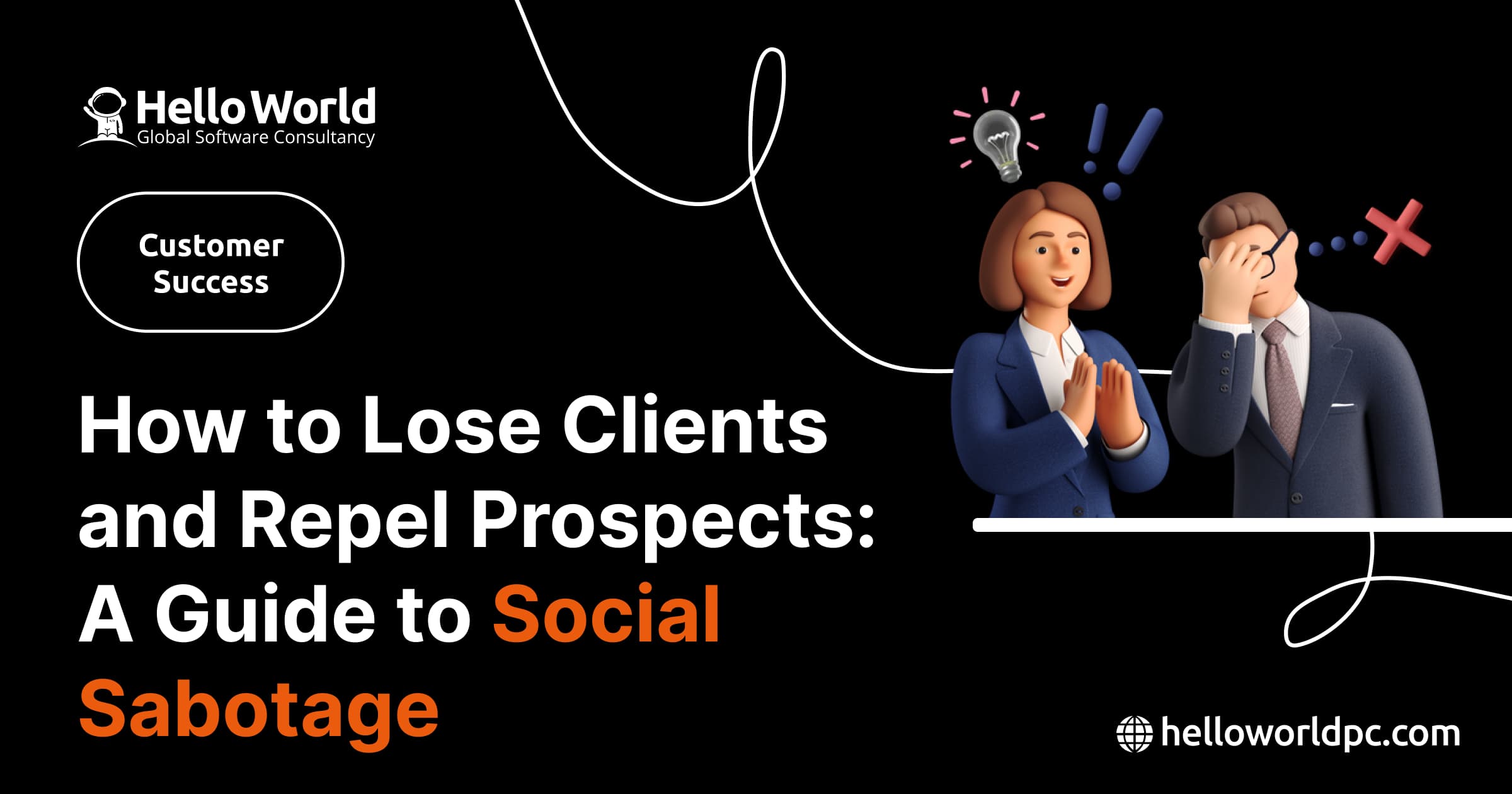In the high-stakes world of custom software development, maintaining strong customer relationships is similar to walking a tightrope over a pit of lava - exciting, but dangerous. Yet, what if you're tired of the same old grind of customer satisfaction, glowing testimonials, and repeat business? Fear not! For those adventurous souls yearning to dive headfirst into the fiery pit of failed customer relationships, we present a foolproof guide to ensuring your clients run screaming (and not for joy). Remember, we’re not talking seriously today, but who knows, you might recognize these tactics from businesses you've encountered in the wild!
Ghosting: The Art of Disappearing
Ever been on a date and never heard back? Frustrating, isn't it? Apply that same principle to your customers! If they reach out with a problem or question, embrace the sound of silence. Don’t return calls, ignore emails, and let their messages disappear in the abyss of your inbox. It’s like playing hide and seek, except you're hiding in a different dimension. This strategy is especially effective when your client is awaiting critical updates or is on the brink of a deadline. The suspense will kill them - figuratively, we hope. Remember, in the realm of software development, silence isn't just golden; it's platinum.
Scope Creep Is Your New Best Friend
Who doesn't love a surprise, especially when it comes with extra zeros on the final invoice? Embrace scope creep with open arms. When your client asks for a small, reasonable addition to the project, nod enthusiastically, and then multiply it by ten. Don't discuss it; just do it. This approach not only ensures a bloated project but also guarantees an explosive reveal at the end. After all, everyone loves a plot twist.
The Blame Game: It's Always the Customer's Fault
Ah, the classic move of turning the tables – nothing says "I value you" like blaming the customer for everything that goes wrong. This strategy is particularly effective because it combines the thrill of problem-solving with the joy of gaslighting. When clients dare to suggest changes or report bugs, take it as a personal attack. Defend your code and design choices with the passion of a thousand suns. Remember, the customer may always think they're right, but you know better. After all, who needs happy clients when you can have artistic integrity?
Deadline Schmedline
Deadlines are merely suggestions, right? If you're truly committed to the art of customer dissatisfaction, treat deadlines with the same respect you'd give to a "Do Not Walk on the Grass" sign. Your client needs the project by Q3? Perfect, aim for a grand unveiling in Q2... of the following year. This not only builds anticipation but also gives you ample time to explore all the ways you can further disengage from the project's goals.
The Roundabout: Confuse, Don't Clarify
Embrace the labyrinth of confusion. When a client inquires about a project update or seeks clarification, send them on an odyssey through the corporate jungle. Each reply should be more cryptic than the last, a breadcrumb trail leading nowhere. Imagine it as crafting a real-life "Choose Your Own Adventure" book, where every choice loops back to the start or leads to a page that says, "Oops, dead end!" The goal? To have your clients so bewildered, they start to question not just your project's status but their own existence. This not only establishes you as a master of misdirection but also turns every client interaction into a puzzle that would stump even the most dedicated escape room enthusiasts.
There you have it, a foolproof guide to ensuring your customers flee at speeds previously thought impossible. While we've had our fun poking at the absurdities of bad customer service, let's remember that the real art lies in doing the exact opposite. Cherish your customers, listen to their feedback, be present, and always strive to improve. After all, in the real world, we aim for success, not a masterclass in how to fail.
And if you ever encounter businesses practicing these techniques, remember, they might just be following this guide a little too closely :)

